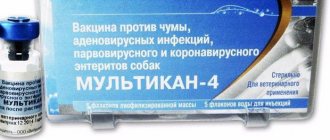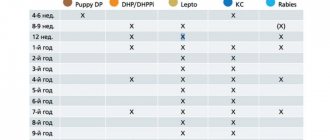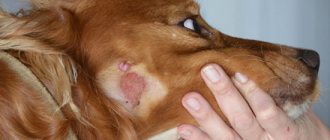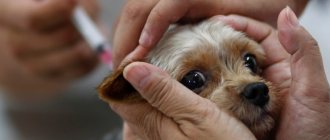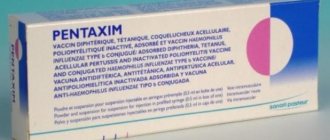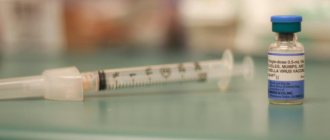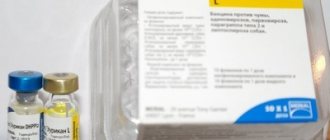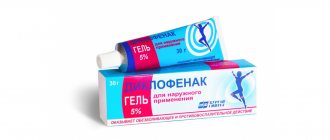| Description of the drug | |
| Release form and storage conditions: | 1 ml of dry component and 2-10 ml of liquid substance (in separate bottles); should be stored in a place away from sunlight at a temperature of 2-8°C (shelf life - 18 months from the date of issue) |
| Price: |
|
| Analogues: | Primodog, Hexadog, Biocan, Vanguard, Nobivak, Eurikan |
COMPOSITION AND FORM OF RELEASE MULTIKAN-6
According to the instructions for use, the vaccine drug Multikan 6
are made from attenuated strains of canine distemper virus, canine adenovirus type 2, parvovirus and canine coronavirus, inactivated strains of Leptospira serogroups Canicola and Icterohemorrhagia. The Multikan 6 vaccine consists of two components:
- lyophilized, against canine distemper, adenoviral infections, parvovirus and coronavirus enteritis of dogs liquid, against leptospirosis of dogs
- The lyophilized and liquid components of the vaccine are produced in volumes of 1 and 2 ml, respectively, in bottles or ampoules with a capacity of 3-10 ml. The vial (ampoule) contains one dose of each vaccine component. The liquid component is a lyophilized solvent.
- The lyophilized component Multikan 6 is a dry, homogeneous, finely porous mass of yellow-pink color. The liquid component is a colorless liquid with a gray-white precipitate that breaks up when shaken into a homogeneous suspension.
Description
What kind of vaccine is “Multican-6”? The instructions for use state that the drug is absolutely safe for animals and highly effective. It is considered an excellent preventive measure:
- adenoviral infections;
- plague;
- leptospirosis;
- coronavirus enteritis;
- parvovirus enteritis.
The vaccine is produced in the form of an injection solution in two different vials: a liquid component and a lyophilized one. The product "Multikan" is produced in different forms (1,2,4,6,7,8). Each drug number has its own indications, but all of them are prophylactic antiviral. As a rule, puppies begin to be vaccinated at eight to ten weeks of age. Before use, the contents of the bottle must be mixed with the liquid component and the lyophilized component to obtain a homogeneous consistency.

The vaccine should be stored in a dark place, at a temperature of two to eight degrees. The solution should not be administered in damaged vials. Judging by reviews, the Multikan-6 dog vaccination is a highly effective, inexpensive product that protects dogs from dangerous diseases. Despite its availability and effectiveness, it can be difficult for some dogs, especially small breeds.
DOSES AND METHOD OF APPLICATION MULTIKAN 6
According to the instructions for veterinary use, clinically healthy puppies and adult dogs are subject to active vaccination. Before use, the lyophilized vaccine is dissolved in a bottle with a liquid component and shaken until a homogeneous suspension is obtained.
- Adult dogs are vaccinated with Multikan 6 once a year.
- The vaccine is administered intramuscularly in the thigh area in a volume of 2 ml immediately after dissolution. Dogs of small and decorative breeds are vaccinated in a volume of 1 ml. Syringes and needles are sterilized by boiling for 10 minutes before use. A separate needle is used for each animal.
- Puppies are given the Multikan 6 vaccine at 8-10 weeks of age
and again after 21-28 days. Revaccination of puppies is carried out at the age of 10-12 months.
Biological properties
Vaccination for puppies with the drug “Multican 6” begins to act actively 14–21 days after the procedure. At this time, immunity is acquired, which will work for 6–8 months.
Adult dogs will have immunity for 12 to 15 months. Please note that the product has no medicinal properties and is used solely to prevent infection of animals.
Find out what they protect against and how to inject your dog with the Vakderm and Nobivak DHPPi vaccines.
STORAGE CONDITIONS
In a dry, dark place at a temperature of 2 to 8 °C. Shelf life of Multikan is 6 - 18 months.
Published canine vaccination guidelines allow the clinician to implement protocols designed for individual patients that provide protective immunity at appropriate life stages.
However, the protocols used in practice usually require the owner to comply with the recommended ideal Multican 6 vaccination schedule.
This article discusses immunization options for dogs. Remember, however, that the recommendations outlined are largely based on expert opinion; Published scientific research on revaccination requirements is limited.
- Core vaccines except rabies: 3 doses from 6 to 16 weeks of age
- Rabies vaccine: single dose at least 12 weeks of age
Multikan vaccine price
It's no secret that all imported vaccines are much more expensive than our drugs. This one is no exception. Its price in the Russian Federation ranges from 200 to 220 rubles. And this takes into account the fact that foreign analogs are more likely to cause allergies and side effects.
The drug is dispensed without a prescription. However, it is necessary to comply with storage standards (if necessary), as well as transportation. If you purchased it in the summer, at the height of the heat, it should be transported in an ice bag and then kept in the refrigerator until use.
Learn about essential drugs in animals
- Vaccination of puppies
- Vaccination of cats against rabies
- Vaccination of small animals
- Kitten vaccination
- Vaccination of dogs against rabies
- Why do kittens need to be vaccinated?
- Nobivac Triquet Trio
- Nobivac DHPPi for dogs
- Puppy's first vaccination
- Comprehensive vaccinations for cats
- Tick vaccination for dogs
- What vaccinations are given to dogs and why?
- Why is Ursofalk prescribed to cats?
- Instructions for using serenia for animals
- Ursofalk in dogs
- Marfloxin for veterinary medicine
- Instructions for the use of serenia in dogs
- Instructions for using serenia in cats
- Why is Heptor prescribed to a dog?
- Instructions for the use of lidocaine in dogs
- Heptor in cats
- Lidocaine for cats. Can cats use lidocaine?
- Heptral in dogs
- Can cats use marfloxin?
- Marfloxin for dogs (instructions for use)
- Heptral in cats (instructions for use, pharmacology
- Instructions for use of Dirofen for cats
- Instructions for using Vetom in cats
- Instructions: multifel for cats
- Use of fosprenil in cats
^Top
When to use
This vaccine should be given when the puppy is eight or nine weeks old. Reapply it after four weeks. Revaccination is carried out when the dog turns one year old.
It is worth considering that for an adult dog this procedure must be carried out annually. But if the purchased drug is out of date, be sure to destroy it - you cannot administer such a vaccine, otherwise the consequences may be irreversible.
In addition, please note that if there is damaged packaging or sediment in the liquid, it is strictly not recommended to use Multikan-6 - this will only harm the animal.
What diseases does a vaccine help against?
Multifel-4 is designed to protect adult cats and kittens from panleukopenia, rhinotracheitis, calicivirus infection and chlamydia. Each of these diseases poses a serious problem for animals, since it is very difficult to combat pathogens with the help of medicines. The only solution may be to vaccinate the cat. In this case, the animal’s body independently inactivates pathogenic agents. The Multifel-4 vaccine, used for vaccinations, copes well with the task.
global $ads_google; //data-ad-slot=”2475549904″ $ads_google = empty($ads_google) ? false : true; ?> if ($ads_google == false) {?>
$ads_google = true; ?> } ?>
Panleukopenia has a second name - “feline distemper”. The causative agent of the disease is a virus from the genus Pavoviridae. The microbe remains stable in the environment for up to one year. Without a vaccine, the disease occurs in the form of acute infectious gastroenteritis. With panleukopenia, general intoxication of the cat’s body begins, accompanied by fever and abdominal pain.
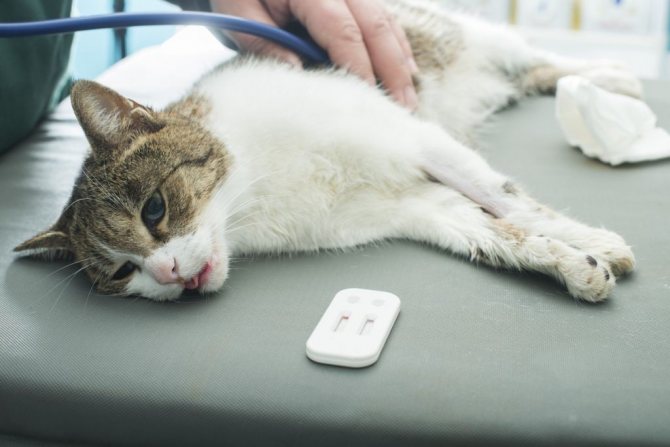
Rhinotracheitis is an acute contagious disease that suddenly begins. The culprit is the feline herpes virus, which affects the respiratory organs of the animal. The disease is characterized by coughing, sneezing, rhinitis, purulent conjunctivitis, salivation, and high fever.
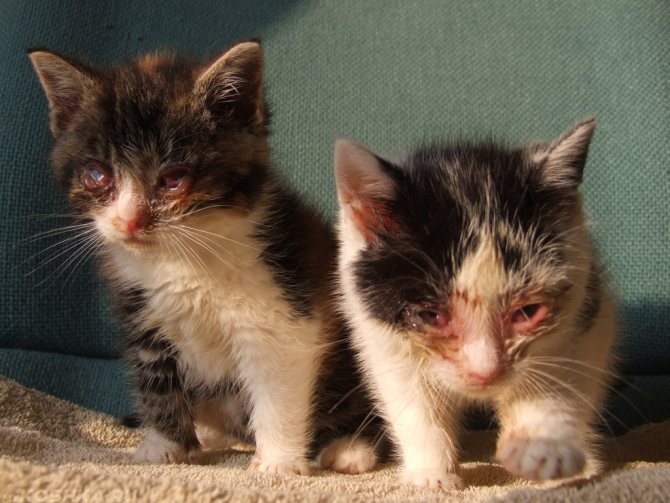
Calicivirus infection begins when the pathogenic microorganism calicivirus enters the cat's body. The oral cavity, sinuses, and eyes are primarily affected. Symptoms of the disease are respiratory phenomena, conjunctivitis, stomatitis. Cats that have recovered from the disease are resistant to re-infection, but are carriers of the infection.
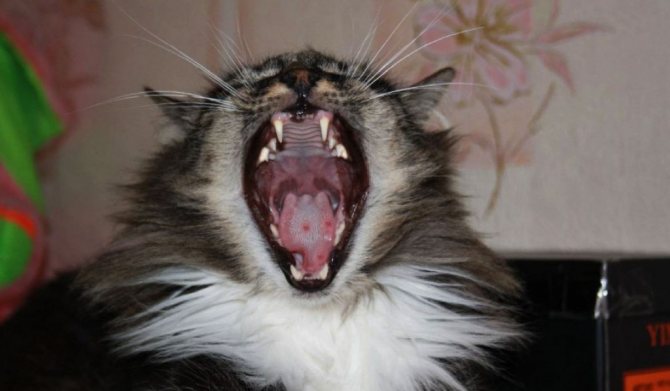
Chlamydia develops when infected with bacteria of the genus Chlamydia, which are intracellular parasites. The first 7-10 days the disease is hidden. When the incubation period ends, the cat will show various symptoms. This may include short-term fever, conjunctivitis, lacrimation, urethral discharge, and weakness.
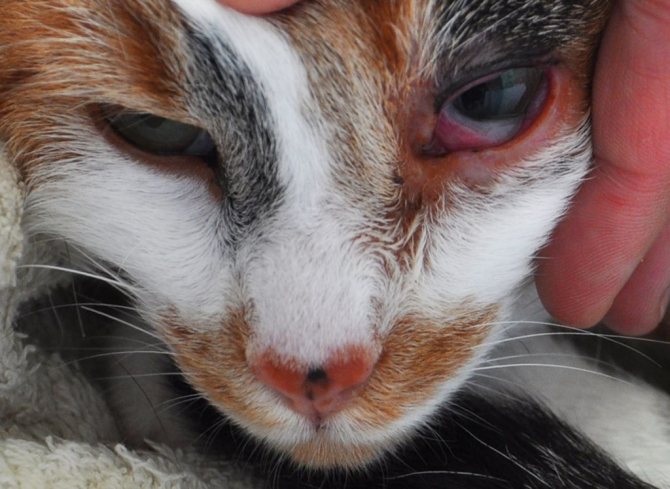
special instructions
- Vaccination is carried out in compliance with the rules of asepsis; only sterile materials and instruments are used for injection. A separate needle is used for each animal.
- Violations of the vaccination schedule (timing) should be avoided, as this can lead to a decrease in the effectiveness of immunoprophylaxis against distemper, adenovirus infections, parvovirus and coronavirus enteritis, leptospirosis and rabies in dogs. If the next dose of vaccine is missed, immunization should be carried out as soon as possible.
- The vaccine is not used in the same syringe with other biological products and drugs, and also within 7 days after deworming and 14 days after treatment with chlorine- and phosphorus-containing drugs. The blood serum of vaccinated animals is not tested in a microagglutination test (PMA) for the presence of antibodies to Leptospira within 2 months after administration of the vaccine.
How to give an injection
You must know and follow the following rules:
- The drug Multifel 4 is injected exclusively intramuscularly. If you give a subcutaneous injection, the product will not dissolve and will not have the necessary effect, and a hard neoplasm, similar to a lump, will form at the injection site. It can only be removed surgically.
- A few weeks before vaccination with Multifel, the cat should be treated for helminths.
- Before the injection, the ampoule with the drug must be thoroughly shaken so that the mixture becomes homogeneous. There should be no sediment at all.
- It is permissible to use only sterile instruments.
- Each cat is vaccinated with a separate syringe.
- It is most convenient to give the injection in the cat's thigh.
After vaccination with Multifel, you should carefully monitor your pet’s well-being and measure its body temperature at least once.
Multifel-4 instructions for use
A fairly effective drug Multifel-4 for cats, instructions for which are included in each package, must be used according to the rules:
- The bottle should be shaken thoroughly, and in winter it should be warmed to room temperature. Avoid precipitation of sedimentary components.
- One bottle is filled into a syringe - 1 ml, the dosage does not depend on body weight. Use sterile instruments and vaccinate immediately after opening the package, otherwise the effectiveness will be reduced.
- Inject intramuscularly.
- After 20-28 days, the procedure should be repeated to consolidate the result.
- If you miss this deadline, the injection must be administered immediately.
- At the age of about a year, repeat immunization will be required according to the same scheme.
Note! When using, personal safety must be observed: if the product comes into contact with the skin, rinse the area thoroughly with water
If a vaccine is administered to a person through negligence, contact a medical facility immediately
